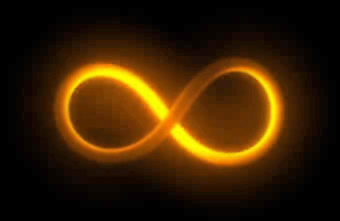What an intriguing thread, thanks for starting it GFreeman! I had to wait until I had some time to actually sit down and read through, then write a respectable reply.
History Channel's The Universe was the start of my fascination with Cosmology and Astronomy... it took things out of the sci-fi realm and made them a reality, and builds on the latest developments in scientific knowledge, which never ceases to be amazing.... Our understanding of Astronomy has changed so drastically over the last 10 years alone that even the textbook I used in college was out of date or even wrong on many theories.

Now, if you want to take things up one more level entirely, I would suggest you watch the first season of Morgan Freeman's Through the Wormhole series (The Science Channel). The series should feel very familiar given you've watched The Universe, much of the latest discoveries and facts will be mentioned or become the basis for further discussion. Through the Wormhole will make you stop and think though, it's a bit more in depth and even more thought provoking than than The Universe was, which is saying something!
Through the Wormhole j
ust started its second season with this one. Watch it in HD elsewhere if possible, it's a full HD quality series with some good CGI (makes The Universe look like 1999-era CGI in quality..

) Here's the episode list:
http://en.wikipedia.org/wiki/Through_the_Wormhole
Ironically, the second episode deals with the increasing expansion of the universe. The Universe dedicated a whole episode to it too. That's been scientifically proven, so if the universe is expanding at an increasing rate, I don't think it can be infinite at the same time.

Let me pose a counter-thought to that. Currently the belief is that there are over 400 billion stars in only OUR galaxy. And 400 Billion more galaxies out there. So, 400 billion * 400 billion is a number I can't wrap my head around... but the odds of earth-like systems developing are pretty good in my opinion, in that context. (The LOWEST numbers I've seen are 200 Billion * 200 Billion, I'm not sure it even matters, really...)
Presently we only have the technology to discover hot Jupiter sized planets, and dense planets around 2.5-5x the size of Earth is just now becoming the reality. We're even starting to realize that the
Goldilocks zone isn't a universal constant... it changes depending on the type of star and planet in question.
Over 560 planets have been located despite these limitations, and more are found every year. We've found a large number of solar systems
with a number of planets in them too, showing it's not a rare thing.
So, lets try another thought experiment to blow everyone's minds:
400 Billion Galaxies * 400 Billion Suns * average number of planets per sun * average number of moons per system.
My point is, it's not just planets that can sustain life. Water exists in a solid, liquid, and gas forms naturally on this planet. Saturn's moon Titan was proven to have Methane that exists as a solid, a liquid, and a gas. Titan actually has methane lakes, methane rain, snow, and ice as active weather patterns. It's atmospheric density is the closest approximation to ours in our solar system, in fact it is 4.5x more dense than Earth's at sea level. And this is possible because of Saturn's heating of the moon, not because of some Goldilocks zone.
So regardless of how infinitesimally small the chance of all the factors coming together perfectly might be, the end number from the above equation is just so large that I think the true scope of earth-like life out in the universe is truly huge. And that's not even considering non earth-like life!


